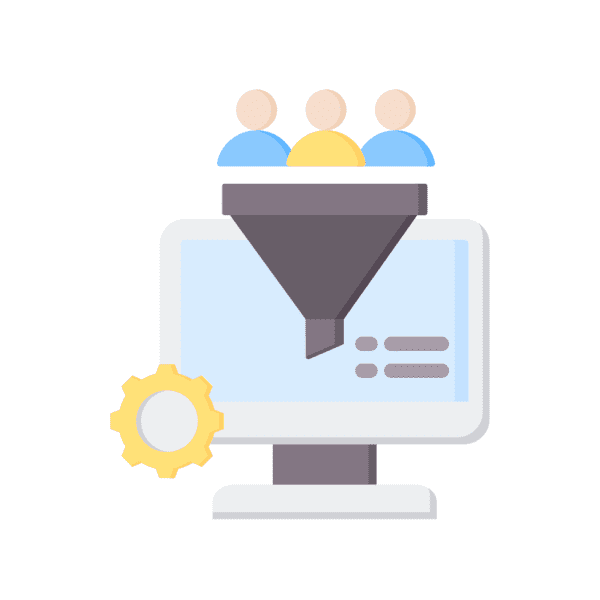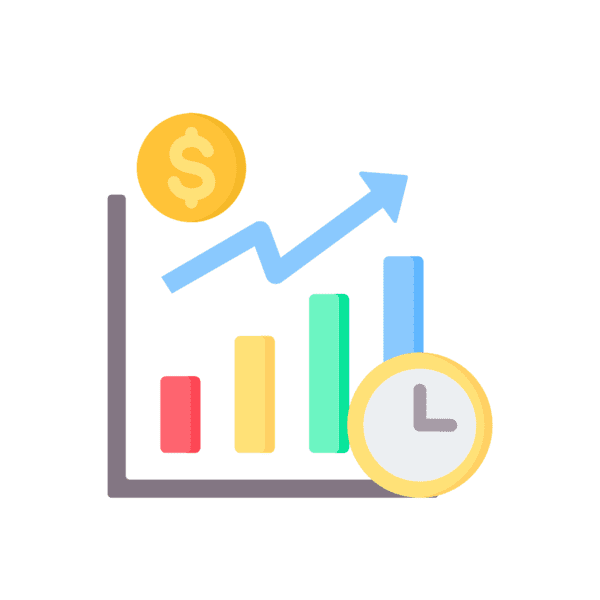What Are B2B Lead Magnets?
A lead magnet is a marketing tool designed to generate interest from a target audience. Typically, lead magnets offer a specific piece of value, such as an ebook, whitepaper, or webinar, in exchange for contact information – usually an email address.
Why Are They Essential in B2B?
In the B2B world, the sales process can be complex and lengthy. Lead magnets simplify this process by starting a conversation with potential prospects. They allow businesses to prove their worth and expertise in their industry, building the trust necessary to nudge leads further down the sales funnel.
How Do They Benefit Businesses?
For small business owners, marketing professionals, and e-commerce companies, lead magnets are like a digital handshake. They offer a low-risk way to begin a dialogue with potential clients or customers, leading to higher-quality leads and a more targeted approach to marketing efforts.

Crafting Your Lead Magnet: Types and Effectiveness
With so many lead magnet options, how do you pick the best one for your business? Look into these types and examples to learn how to choose.
Exploring Various Effective Lead Magnet Ideas
- Ebooks and Guides: Detailed resources that provide in-depth knowledge on a specific topic.
Example: An e-commerce platform offers a guide on navigating the world of online sales taxes.
- Webinars and Online Courses: Live or recorded sessions that deliver value through expertise and interactivity.
Example: A marketing firm organises a webinar on B2B content strategies, offering actionable insights.
- Checklists and Infographics: Visual tools that simplify complex processes or decisions.
Example: A software company creates an infographic on cloud migration best practices.
- Templates and Tools: Ready-to-use resources that save time and offer quick solutions.
Example: A small business consultancy provides a business plan template for startups.
- Assessments and Quizzes: Interactive content that provides personalised insights.
Example: A tax service firm develops an assessment tool for identifying tax efficiency opportunities.
- Free Trials and Demos: Hands-on experiences of your product or service without a financial commitment.
Example: A SaaS company offers a 30-day free trial for its project management tool.
Real-life Examples and Success Stories
- IBM’s Smart Paper Trail: IBM offered a deep-dive report on using blockchain for supply chain solutions, demonstrating expertise in cutting-edge technology.
- Adobe’s Work from Home Guide: Adobe’s comprehensive guide on design best practices for remote work addressed the surge in the online workforce.
- HubSpot’s Social Media Calendar: HubSpot’s ready-to-use content calendar template allowed businesses to streamline their social media planning.
- Free SAP Demo: SAP’s extensive software solutions necessitate a personal demonstration to showcase its capabilities, making the free demo a powerful magnet.
- Mailchimp’s Small Business Growth Insight: Mailchimp’s benchmark report offers customised insights for business growth, leveraging their data analytics.

Tailoring Your Lead Magnet to Your Audience
What works for one industry or market may not work for another. Here’s how to tailor your lead magnet to resonate deeply with your specific audience.
Understanding Your Target Market
Deep dive into market research to understand the pain points, aspirations, and preferences of your ideal B2B customer. This will help you design a lead magnet that hits the sweet spot and encourages sign-ups.
Tailoring to Specific Industries or Niches
Recognise that B2B audiences can be diverse and require different approaches. A lead magnet tailored for a SaaS startup might not suit a manufacturing business. Customisation is key, and the lead magnet should feel exclusive to the recipient.
Designing and Implementing Your Lead Magnet
Creating a lead magnet might sound daunting, but it can be straightforward and effective with the right tools and strategies.
Tools and Resources for Creation
There are plenty of creation tools, ranging from design software like Canva or Adobe Creative Cloud to webinar platforms such as Zoom or Demio. Content management systems like WordPress or Squarespace can be used for landing page creation, and email marketing tools like Mailchimp or Constant Contact are ideal for distributing your content.
Best Practices for Maximum Engagement
High engagement is the goal, so optimise your lead magnet for conversions by:
- Creating a High-Quality Offering: Ensure your lead magnet provides genuine value and showcases your expertise.
- Designing an Eye-catching Landing Page: Your landing page is the first impression. Make it clear, concise, and compelling.
- Keeping the Form Simple: Don’t ask for more information than necessary. Start with the basics and gather more data as the relationship develops.
- Personalising the Experience: Tailor your lead magnet and follow-up communications to the user’s preferences or behaviour.

Measuring the Success of Your Lead Magnet
How do you know if your lead magnet is working? It all comes down to numbers.
Metrics to Track
- Conversion Rate: This tells you how many people who visited your page signed up.
- Email Open Rate: The percentage of recipients who opened your initial email.
- Click-through Rate (CTR): How many people clicked on links within your emails or landing page.
- Lead-to-customer Rate (or Lead Nurturing): How many leads became paying customers.
- Return on Investment (ROI): The financial success of your lead magnet in relation to the resources invested.
Analysing and Adjusting for Better Results
Use A/B testing to try different versions of your lead magnet and landing page to see what works best. Pay close attention to the feedback you get and be prepared to iterate and improve on your initial efforts.

Future Trends in Lead Magnets
The digital marketing world is always changing, and so are the ways we attract customers. In the future, we expect to see lead magnets become more engaging, personalised, and based on data.
- Increased Personalisation: Data analytics and artificial intelligence will enable marketers to create highly personalised lead magnets. These offerings will be tailored to the individual’s industry, specific stages in the buyer’s journey, interests, and past interactions with the brand.
- Interactive Content: Interactive quizzes, assessments, and tools that provide instant value are becoming increasingly popular as lead magnets. These formats engage users more deeply than static content and can yield valuable insights into their preferences and needs.
- AI and Machine Learning: AI and machine learning will become more prevalent in creating and distributing lead magnets. These technologies can help analyse user data and feedback in real time, allowing for the automatic optimisation of lead magnet performance.
- Blockchain and Privacy: As concerns over privacy and data protection rise, future lead magnets could incorporate blockchain technology to ensure the secure, transparent handling of personal information, thus building trust with potential leads.
By staying ahead of these trends, marketers can ensure their lead magnets remain effective tools for generating high-quality leads in the rapidly changing digital environment.
Final Thoughts
From start to detailed analysis, B2B lead magnets are essential in modern marketing. They connect directly with prospects, offer value, and build relationships that lead to conversions.
As you enhance your marketing with these insights, remember that lead magnets should create value and collect data. Design them to inform and delight, guiding potential clients to see your business as their best solution. Now, go ahead, create your lead magnets, and see how they revolutionise your B2B business.
Certainly! Here are some relative links that can enhance the user experience by providing quick navigation to relevant sections of the document. These links aim to make the content more accessible and organised for readers.

FAQ
How often should I update my lead magnet?
Regular updates are crucial to keep your lead magnet relevant. The frequency of updates can depend on the changing needs of your audience, industry trends, and the performance metrics of your current lead magnet. A general guideline is to review and update your lead magnet at least once a year.
Can I use multiple lead magnets?
Absolutely! Using multiple lead magnets can be an effective strategy to cater to different segments of your audience or different stages of the buyer’s journey. It allows for more personalised marketing efforts and can increase overall conversion rates.
How do I promote my lead magnet?
Promote your lead magnet through multiple channels for the best results. This can include your website, social media platforms, email marketing, pay-per-click advertising, and content marketing. The key is to ensure that your promotional efforts are targeted and consistent.

Comments